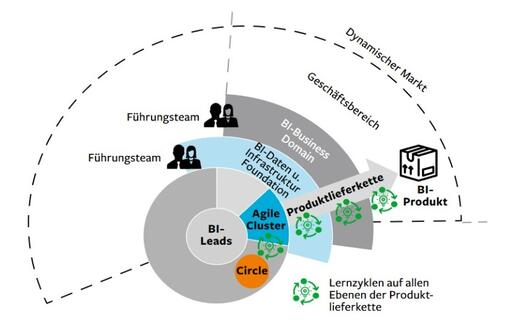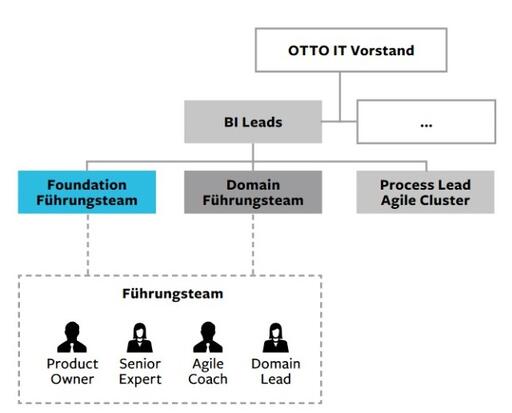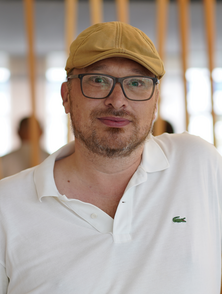What is the article about?
The Business Intelligence Division is playing a decisive role on OTTO's journey towards becoming a connected company. It realigned and transformed itself in 2019 into an agile, adaptable organisational unit. Beyond data and algorithms, BI relies above all on its people and the continuous adaptation of the organisation through joint learning.
OTTO is undergoing the greatest transformation in the company's history: we are further developing our business model – from retailer to platform. In doing so, we’re taking a major step towards expanding our offer, onboarding partners and expanding services for our customers. Driven by the vision ‘Responsible commerce that inspires’, we’re strengthening our customer focus with highly intelligent and personal advice, both online and offline. In this we continually strive to connect and interlock all customer touchpoints.
To do this transformation justice and keep pace with the dynamic e-commerce market, we are already successfully automating, bundling and digitizing many business processes. As a result, the Business Intelligence (BI) Division in particular is gaining importance. With modern approaches to Artificial Intelligence (AI) and the support of our IT experts, we’re increasing our innovative strength and internal degree of digitization.
Business value through data-driven insight
The changing demands on IT processes also entail adapting the organisational structure. At the beginning of 2019, the Business Intelligence Division was realigned and transformed into an agile, systemic organisational unit. The stand-out feature of the new model is its clear customer and product focus as well as a shared lateral leadership (leadership without disciplinary authority). BI is designed to help build the necessary control and automation capabilities for OTTO’s platform business model, while removing the current limitations on scalability on the organisational as well as the technological side.
Around 300 colleagues in twelve BI Business Domains as well as Data and Infrastructure Foundations handle a wide range of technologies and BI products. They apply cloud technologies that enable rapid roll-outs. The objective is to make the existing data treasure trove available on demand to as many internal users as possible in real time, and to develop suitable BI applications rapidly to serve the OTTO business model. Through self-service analytics we offer colleagues the opportunity to create their own analyses and reports: this makes it easier and faster to gain data-driven insights collaboratively, take decisions and generate greater business value. On the journey from OTTO to becoming a connected company, the BI Division relies on data, algorithms and AI but especially on the people within its organisation.
Continuous progress review
The Division has a circular structure and is organised into Business Domains, BI Data and Infrastructure Foundations. The Domains and Foundations are jointly responsible for the BI ‘product supply chains’, the operational level that delivers BI products for a business unit. For instance, a BI product can be a report, AI-based algorithms, or structured data for a self-service analysis.

“The stand-out feature of the new model is its clear customer and product focus as well as shared leadership.” (Handelsblatt, 2021)
A product supply chain (see Figure 1) typically brings together several agile, cross-functional Product Development teams. These teams align their actions with the BI vision of ‘Innovation and excellent decisions through data, algorithms and people’. They involve internal customers and apply permanent critical review processes to their own progress and approach. Here, in the roles of Domain and Foundation Lead, Product Owners, Senior Expert and Agile Coach, the leadership team is decisive. The role-holders complement each other in the dimensions of strategic, professional, procedural and human leadership.

Figure 1: Organizational structure in business intelligence
Continuous optimisation through circles
The Product Development teams work in sprints and receive regular feedback from the business units. To keep productivity high and maximise the learning effect within the team, they can independently schedule so-called ‘slacktime’ up to half a day per week. Slacktime helps teams to think out-of-the-box about their approach by applying agile methods to encourage them to open up the problem and solution space even further. For overarching topics and coordination in the tech teams, the ‘scrum of scrums’ format is often used for regular exchange across teams on the latest developments, changes and obstacles. This promotes cross-team collaboration and solution-orientated thinking in the product supply chain. The management teams are responsible for removing any identified operational obstacles from the learning cycles. The product supply chains, the organisational units and the infrastructure are continuously optimized within a product, architectural and organisational process Circle. These Circles consist of experts with differing roles and hierarchy levels from across the BI organisation; the Circles thus define governance for the IT infrastructure, data, products and cross-team collaboration, thereby helping to drive operational excellence.
Role diversity fosters innovation
The shared leadership allows space for innovative solutions and fresh ideas through the diversity and
competencies of the individual actors. We believe that by distributing leadership among several people within a leadership team we can manage existing complexity better. The different roles in the management team help promote team spirit and motivate team members to achieve goals together.
“Otto is one of the leading German online shopping platforms which, as part of its transformation, will in future share leadership across several individuals to make existing complexity easier to handle. [...] We believe that by distributing leadership among several people within a leadership team we can manage existing complexity better.“ (Handelsblatt, 2021)

The leadership teams of the twelve BI Areas report to two BI Leads. In turn, the two BI Leads see themselves as a management team with overarching responsibility for the BI Division in all of the leadership dimensions mentioned above. In turn, the Process Lead heads the Agile Cluster functional unit, which consists of several Agile Coaches. The task of the Agile Cluster is to implement the necessary governance and agile methods uniformly right across the BI Division. The Process Lead bears overall responsibility for the operational excellence of the BI Division and supports the BI Leads in strategic and organisational issues (see Figure 2).

Figure 2: shared leadership in business intelligence
Feedback culture as an important component of learning
To further optimize the adaptable, agile organisation, the management teams are to be further supported in their shared leadership by coaches over the next few months, so that everyone can contribute their own leadership dimension and responsibility even better towards strengthening the team mindset and therefore give the Product Development teams better orientation.
Another important tool for interpersonal learning is the feedback culture. As an official HR tool, 360-degree feedback is provided as a development format for all colleagues. In addition, the Agile Coaches offer regular feedback trainings to help promote constructive feedback discussions and lower inhibitions. Through the learning cycles at all levels of the organisation, across teams in the product supply chain, in the Circles as well as in the management and Product Development teams, we identify necessary structural changes at team, process and strategy level at an early stage. This makes the BI Division an adaptable and scalable organisation. The perfect organisational structure for us is the one that is adapted at all levels based on joint learning.
Quote source: Tritschel, R. & Meyer, M. (06.09.2021): Wie eine agile Organisation Skalierung möglich macht. changement! Handelsblatt.
Want to be part of the team?
0No comments yet.
Written by


Similar Articles
 AlexanderSeptember 15, 2022
AlexanderSeptember 15, 2022Fully-automated enterprise-scaled provisioning of AWS Accounts via Self-Service using Jira Service Desk
00In this article, we’ll demonstrate how to automate the provisioning of AWS Accounts via self-service using Jira Service Desk, potentially reducing the provisioning time of out AWS Accounts from 4 hours to 25 minutes.Project managementWorking methods RenéFebruary 28, 2022
RenéFebruary 28, 2022A brief guide to replacing legacy software
03Some see the task of ‘replacing outdated software’ as punishment. Well, I see it differently! In this article I’ll explain how we successfully introduced an extensive new system and resolved over 100 dependencies. Software, just like natural organisms, has a finite lifecycle. Howeve…ArchitectureProject management






